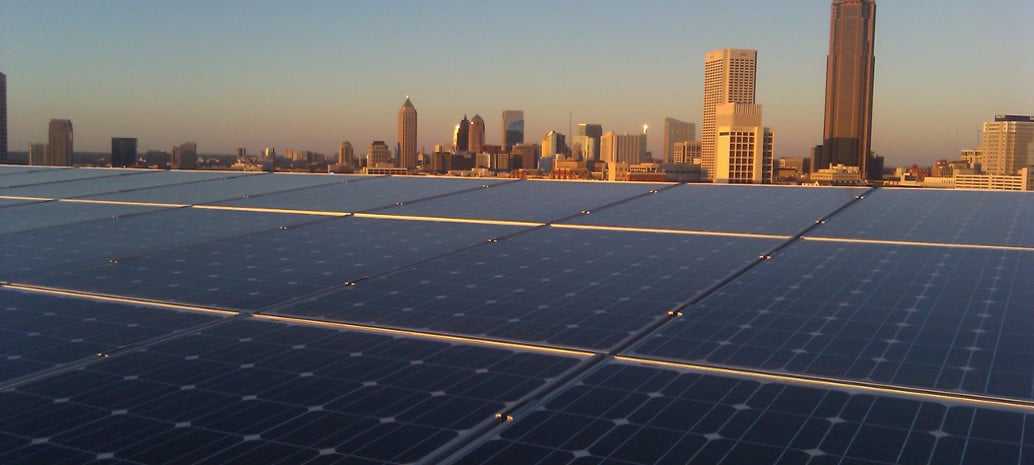The Rocky Mountain Institute (RMI) released “The Carbon-Free City Handbook”, contains “no regrets actions” designed to enable cities around the world to reduce and eliminate their carbon footprint. The RMI believes these actions are needed as cities encompass ever larger percentages of the world’s population. Going carbon free avoids climate change risk as well as it, in the words of RMI CEO Jules Kortenhorst, “brings economic, health and stability opportunities as well”.
The 72-page downloadable handbook is divided into five sections for buildings, transportation and mobility, electricity, industry and biological resources. Each section has recommendations, examples and hyperlinked references. The handbook is designed to be readily actionable for decision makers, planners and working staff.
There are a number of direct and indirect references to the inclusion of solar photovoltaic power. In the buildings section, a desired goal is achieving net-zero code and function statuses for structures. After energy consumption is reduced to a minimum, onsite renewable energy generation, likely PV in the majority of cases, would complete the balance. These actions would be achieved through retrofits for existing buildings, with those and new construction projects subject to “progressive codes” to attain net zero functioning. Initial markets would be public sector buildings, radiating out to eventually include all structures. Examples cited are Santa Monica, California, Vancouver, British Columbia and New York City.
In the electricity section, three strategies relevant to PV are electric districts, municipal solar installations and municipal renewable supply. City governments would lead the way by implementing solar installations on their buildings and properties. They would also shepherd transition to 100% renewable energy usage through announced goals and then implement those goals with action plans. The creation of electricity districts, where no fossil fuel usage would be allowed for buildings, would likely spur solar development to meet demands previously supplied from coal and hydrocarbon sources. Examples given are Amsterdam, Kansas City, Missouri, Houston and Philadelphia.
The “Carbon-Free Handbook” can serve as a useful template for localities planning or actively engaged in large-scale solar and related initiatives like the Sierra Club’s “Ready For 100” and the U.S. Department of Energy’s “SolSmart” programs.
This content is protected by copyright and may not be reused. If you want to cooperate with us and would like to reuse some of our content, please contact: editors@pv-magazine.com.








By submitting this form you agree to pv magazine using your data for the purposes of publishing your comment.
Your personal data will only be disclosed or otherwise transmitted to third parties for the purposes of spam filtering or if this is necessary for technical maintenance of the website. Any other transfer to third parties will not take place unless this is justified on the basis of applicable data protection regulations or if pv magazine is legally obliged to do so.
You may revoke this consent at any time with effect for the future, in which case your personal data will be deleted immediately. Otherwise, your data will be deleted if pv magazine has processed your request or the purpose of data storage is fulfilled.
Further information on data privacy can be found in our Data Protection Policy.